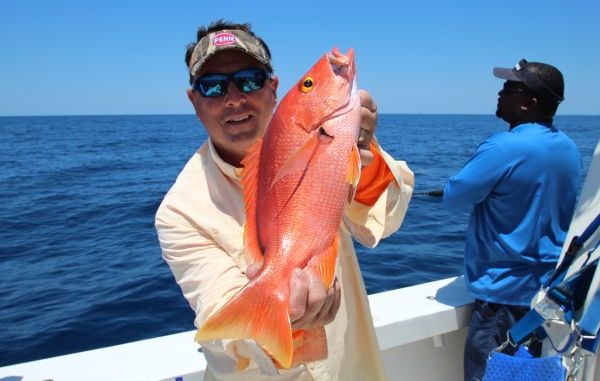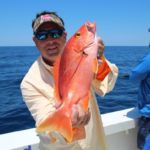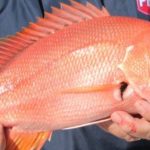
Biologists need to be humbled sometimes.
When I was working at LSU in the 1980s, I spent a lot of time on commercial snapper boats documenting catches of reef fish and looking for new species that could be of interest to seafood consumers.
Late one night, the crew of the snapper boat I was on was hauling in big catches of red snappers (perhaps red-colored snappers was more appropriate).
I was weighing, measuring and identifying every fish as they were landed. I had a small mountain of fish that I had worked and were ready for icing.
On this particular vessel, one of the deck hands was an old sea dog — a real interesting character. On land, between trips, he loved to drink and stayed snookered.
But on a boat, he was amazing. No matter how rough it got, he never staggered, instead rolling with the seas as he worked. He never walked by a connector and cable on the boat without checking it.
He was also the one who taught me how to make authentic Mexican ceviche, as he spent years working on snapper boats on the Campeche Banks before they were closed to Americans — but that’s another story.
Late that night, after sending down his gear, he walked into the cabin to get a cup of coffee. When he walked back, he looked over my shoulder into my log book.
“Ya know,” he tossed off, “them fish is hambones. They ain’t red snappers.”
When he spoke, I immediately recognized my error.
I was embarrassed, although I probably shouldn’t have been.
The blackfin snapper (what he called a hambone) is the great red snapper look-alike.
After checking all the fish in the pile to reidentify them, I mused over my mistake. How many recreational fisherman were tossing back these fish unnecessarily, mistaking them for red snappers that at that time were under a five-fish limit with a 16-inch minimum size.
Blackfin snappers were and still are one of the eight species of snappers (the others are mangrove, cubera, yellowtail, mutton, queen, silk and wenchman) covered under a separate 10-fish aggregate bag limit with no minimum size.
Fish in this bag limit also have no closed season.
I vowed that if I ever wrote a fish identification book, which I did with the Angler’s Guide to Fishes of the Gulf of Mexico, I would emphasize the similarity between red and blackfin snappers and how to separate them.
Blackfin snappers carry the scientific name of Lutjanus buccanella. The genus Lutjanus is the largest in the family, and apparently is derived from the Malay language — “ikan lutjan” — for the name of a fish. Snappers truly are a world-wide family.
The origin of the species name, buccanella is also obscure, but is definitely derived from the Latin word for mouth, which is “bucca.” The Portuguese name for the fish is “boca negra,” which translates as “black mouth.” Another name for the fish in part of its range is “gun-mouth snapper.”
Although I see nothing about the mouth that is black, apparently others do.
Its distinguishing feature is black, however. It is an easy-to-overlook, comma-shaped black spot right where each pectoral fin of the fish meets the body.
Closer inspection will also reveal that the fish is slightly redder than the pinkish orange of a red snapper, and that it has a yellower eye and a yellow cast in many of its fins that the red snapper doesn’t.
Still, in the middle of catching and unhooking fish, it is easy to overlook these features and assume the fish is a red snapper, especially since that is what people most often expect to catch offshore.
Blackfin snappers are found in the same type of habitat as their more-famous cousin, typically in waters 200 to 300 feet deep and near hard bottom. And, like red snappers, they often form schools.
Blackfin snappers range from offshore of North Carolina, through the Gulf of Mexico down to northern Brazil. They are very common in the Caribbean, but are not rare off of our coast.
They do not grow as large as red snappers. Although they are listed with a maximum weight of 30 pounds, the IGFA world record blackfin is an 8-pound, 8-ounce specimen from Key West. Louisiana keeps no records on the species.
Maturity occurs in females at 7 inches long and males at 15 inches. Off Jamaica, blackfin snappers spawn most of the year, with a peak between April and September. The eggs and larvae are pelagic, meaning that they float at the mercy of tides and currents.
Blackfin snappers feed indiscriminately near the bottom on shrimp, worms and other small invertebrates when they are young. Their diet shifts more to finfish as they grow larger.
Blackfin snappers are excellent table fare — as good as red snappers. Because they are caught in numbers too low to have a market developed specifically for them and because they are so similar in appearance and taste to red snappers, the two species are often comingled in the seafood trade.




